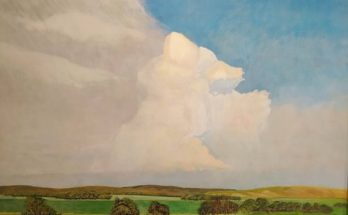By Paola Velasco
Chocolate is proudly Mexican. According to legend, the cacao tree is a gift that the god Quetzalcoatl made to men. Years later it would be baptized with the scientific name of Theobroma Cacao, which means «food of the gods» in Greek.
The cacao tree is grown mainly in West Africa, Central America, South America, and Asia. It grows in tropical regions between 400 and 1,250 meters of altitude with maximum temperatures of 30-32º C, and we find it in the humid forests of the tropics.
Chocolate has multiple benefits for the human body. Specialists recommend regularly consuming dark chocolate due to its low added sugar content. It is recognized as a great antioxidant, since it contains substances such as polyphenols, flavonoids (especially proanthocyanins), and catechins, among others. It also helps keep the heart healthy as it prevents cardiovascular problems. In the brain, it helps stimulate blood flow between the brain and the heart.
It could be said that it is a natural stimulant with therapeutic effects, since it contains between 25-35 mg of caffeine, which translates into a state of alertness and improves attention. It also contains phenylethylamine, a substance responsible for releasing endorphins in the brain, generating a feeling of well-being. Its high antioxidant content also helps enable healthier and more hydrated skin.
Chocolate Timeline
1500-400 BC. The Olmecs were the first humans to taste chocolate, grinding cacao beans and mixing them with water and spices.
600 BC. Chocolate spread to the Mayan civilization.
1400 BC. Chocolate reached the Aztec civilization.
1519. Hernán Cortés arrived in Mexico. The Spanish adopted the custom of drinking chocolate, adding sugar. In one of the letters that Hernán Cortes sent to Carlos V, he assured him that a cup of «xocoatl» was enough to sustain the forces of a soldier throughout the day.
1528. Cortés returned to Spain with a shipment of cacao beans and the recipes and utensils necessary for its preparation.
1615. Chocolate was introduced to France, thanks to the royal union of Louis XIII with the Spanish princess Anne of Austria.
1646. Chocolate was introduced to Germany.
1657. Chocolate was introduced in England, where tasting rooms such as the Cacao Tree and White’s were opened.
1659. The first chocolate factory was opened in Paris, France.
1697. A Swiss tasted chocolate in Belgium and brought it back to his country of origin in 1711.
1720. Italian chocolate shops were acclaimed for their high quality.
1765. Chocolate was discovered by the Americans when they were a colony of England. Charles Linne was the one who gave chocolate the Latin name “Theobroma,” which means food of the gods.
1776. The Frenchman Doret invented a hydraulic machine that could grind cocoa beans into a paste and thus favor the production of chocolate in large quantities.
1780. The first chocolate factory was opened in Barcelona, Spain. Later Germany and Switzerland followed in Spain’s footsteps by opening more factories.
1819. Pelletier installed one of the first steam-powered chocolate factories in Paris. In the same year Fransi Louis Cailler founded the first chocolate shop in in Vevey, Switzerland.
1828. The Dutchman Conrad Van Houten invented a press that allowed him to extract the fat, that is, the cocoa butter, leaving behind the cocoa powder that we know today as bitter cocoa.
1879. Switzerland’s Daniel Peter decided to add milk to chocolate, and the world’s first milk chocolate was born.
1893. The confectioner Milton S. Hershey discovered chocolate at a universal exposition in Chicago and began to produce it by opening a factory in Pennsylvania.
Nowadays we can savor white chocolate, milk chocolate, and dark chocolate in multiple presentations and in drinks, desserts, traditional dishes such as mole, and, of course, in unique pieces that are a work of art for the palate. We have to thank Quetzalcoatl who gave us this magical and complete ingredient.
References: www.clubdelchocolate, www.cuidate.com, www.mexicodesconocido




